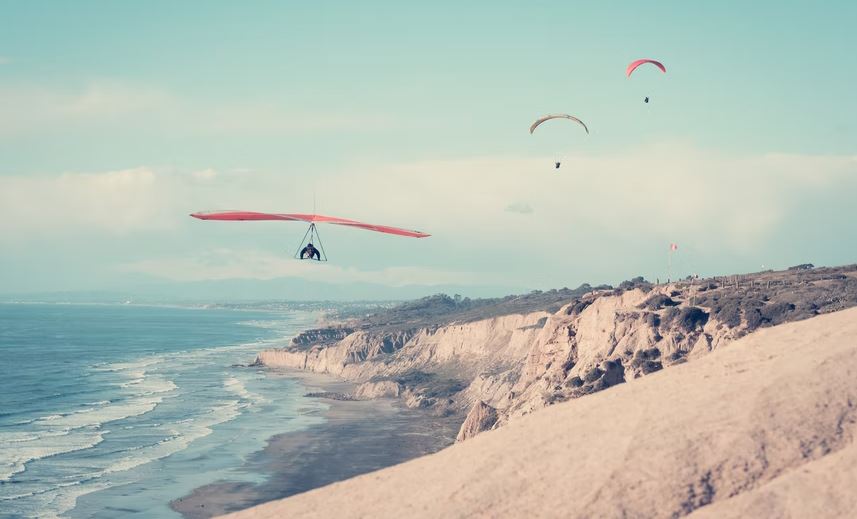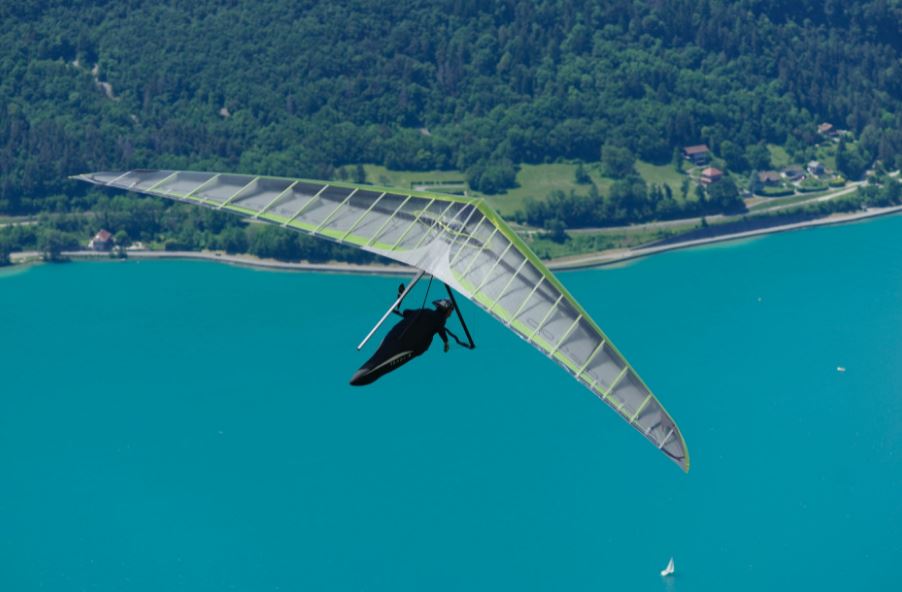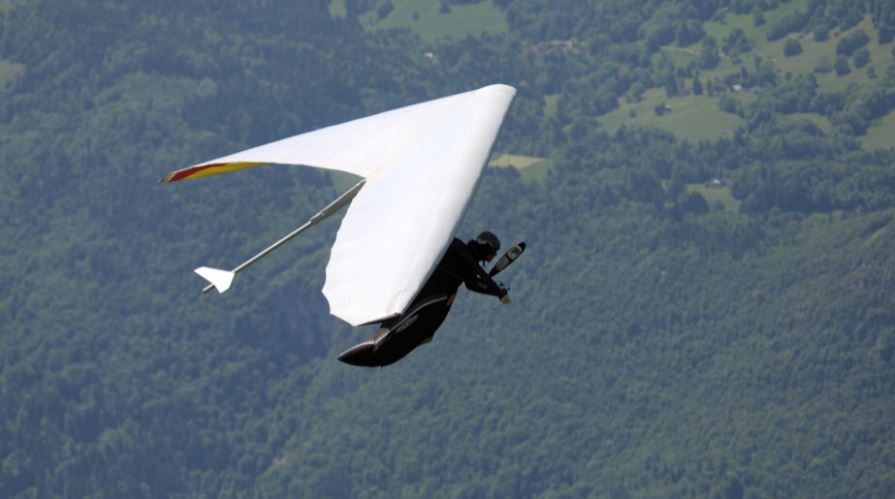Hang gliding is a thrilling sport, ideal for those who love the extreme. Imagine soaring in the sky and drifting in the open, chilly air, all while relishing the stunning views below – the surreal feeling is simply unmatchable. While all you need are a few essential equipment and gears, and ample proper training, having and carrying other useful tools will make the activity safe and even more enjoyable. Don’t fret, as we’ve already listed them for you – prepare them and start experiencing the fun and solitude in this high-flyer sport.
Basic Equipment You Need for Hang Gliding
First, it’s vital to know the essential equipment you need for the sport. Generally, the basic things you need to float are the hang glider, helmet, and glider. Apart from them, you need to bring valuable tools for safety, tracking, and communication to further ensure your safety when hang gliding. Below is a more thorough explanation of this equipment.
1. Hang Glider
Also called the flexible wing, the hang glider is the main equipment for hang gliding. Various materials like aircraft aluminum alloy, carbon fiber, stainless steel, and synthetic sailcloth make up the overall structure of the hang glider.
Essential parts of the hang glider include aluminum and leading-edge tubes, control bar, crossbar, keel, sail, kingpost, plastic battens, and wires, each of which is essential or has a specific function for the flight and maneuverability of the flexible wing.
Entry-level hang gliders cost around $3,000 to $4,000, while airworthy used hang gliders range from $1,800 to $3,000. High-quality wings come with an expensive price tag but are worth spending for if you’re looking to make hang gliding a regular sport.
2. Helmet
The primary purpose of the helmet is to protect your head in case of an accident like your parachute collapsing, impact with fixed objects like hillsides or trees, or ground collisions. You can choose from two types of helmets: full face and open face. The former is doubles as an eye shield while providing better protection than the latter. Whichever you prefer, always get a sturdy helmet and one that’s approved and certified by your country’s regulating body.
3. Harness
Another vital component of hang gliding equipment is the harness. It’s a set of straps suspended from the frame, which means to secure you in the prone position while also allowing you to move freely or without restraint. Thus, ensuring your safety without affecting performance. Major types of harnesses include the cocoon, pod harness, and knee hangee-trainer. Have a tough but flexible harness whenever you embark on any hang gliding trip.
Useful Tools For Hang Gliding
Now that you’re aware of the basic equipment, let’s head on to the valuable tools you need for hang gliding. This includes tools, equipment, and instruments to keep you safe, track altitude, position, and other various conditions, and allow you to communicate with other gliders or people assisting you below.
There’s no denying that hang gliding is a riveting experience. Yet, risks and threats are also part of the adventure. These useful tools will help you execute the activity even better and minimize all the dangers that come with the sport.
Safety Tools
1. Flying Suit
Worn over normal clothing, the flying suit is a full-body garment that will provide warmth and comfort as you fly into the skies and combat the wind and the piercing cold. A flying suit is loose-fitting and easy to wear due to its accessible zips and usually comes with plenty of pockets for added practicality.
2. Googles
A simple breeze can get your eyes dry, so imagine what would happen if you reach speeds over 80 mph when up high. That’s why it’s vital to wear goggles when hang gliding. It will keep your eyes safe from the wind, external elements, and high speed. Some goggles even have anti-fog and anti-glare features for better visibility – perfect as you’ll get to appreciate the wonderful view below more without obstructions.
3. Boots
You need to use your feet when taking off and landing with your hang glider. With that, it’s only fitting that you wear boots for protection. Choose flexible and lightweight boots so they won’t add up weight and drag you down while flying. Ensure that the boots also have a decent grip, enough to prevent you from sliding or slipping when running down a slope for landing and ensuring you can land upright with your feet. While comfort is a significant factor, safety and functionality should be on top of your priorities.
4. Reserve Parachute
Though accidents and emergencies rarely happen, having a reserve parachute is still crucial if anything goes wrong. “Reserves” are lightweight, deployable, and fast-opening bags that are handy, especially in high-altitude flights. Its main function is to ensure a stable and safe landing should the main parachute fail, generally due to human error and hardly ever due to mechanical malfunction.
5. Knives
Knives are one of the most important tools humans invented. You use it for cutting, dicing, chopping, slicing, mincing, and other tasks. Meanwhile, knives are also helpful for cutting kindling, fire starting, whittling tent stakes or sticks, or other tasks during campsite activities. Their use is limitless. You can even find the best knives for living off the grid, woodworking, or scale modeling.
Don’t be surprised that knives are useful in hang gliding as well. You can use safety knives or hook knives for cutting yourself free from the harness or webbing in case of water or a tree landing or if you get pulled along by strong winds on the ground. They are specifically designed for pilots of high-flyer sports, which means they won’t stab you while in the skies.
Tracking and Communication Tools
1. GPS
GPS (Global Positioning System) is used by researchers, farmers, travelers, and everyday citizens. From business logistics, locating lost pets, navigating unfamiliar places, to keeping an eye on your belongings, GPS is indeed a helpful tool in many aspects of life.
Hang gliding isn’t an exception. GPS tracking devices are usually integrated into other instruments to help you trace flight paths and observe your technique, while people on the ground use it for monitoring your location and progress.
2. Radio
You need a radio to communicate with the people assisting you from the ground, especially if you’re a beginner, or to talk with other gliders in the sky. A microphone is normally attached to your helmet, providing you with an easy, quick, and effective mode of communication.
Instruments
1. Altimeter
Altitude awareness is essential in hang gliding. You must stay within the safe limit and constantly keep track of your altitude to determine when to ascend or descend. To do so, you need a device called an altimeter, which measures your altitude or how high you’re up in the sky or from the ground.
Two types of altimeters are available: pressure altimeter and radio altimeter. The pressure altimeter is barometric and calculates altitude through atmospheric pressure. On the other hand, radio altimeters utilize radio wave signals and determine altitude using the amount of time it took for the signal to bounce back off the ground or water surface.
2. Variometer
Knowing your rate of ascent when up high can be a challenging task, which is you also need to carry a variometer. It’s a device that tells your vertical speed, which can help you improve your glide and make safer and better flight decisions. Some variometers have a screen, while others that lack them use sound to indicate information.
3. Anemometer
An anemometer is a device that measures wind speed, strength, and direction. While some individuals are skilled at interpreting wind direction, others, especially beginners, have yet to learn so or are not simply fond of doing so. Be sure to fly with one, so you’re always aware of the wind conditions and quickly determine when it’s safe or dangerous to fly in.
Final Words
Hang gliding is one of the best activities to enjoy the sky. Take the necessary lessons, develop your grips, and get all these essential tools for a safer and more unforgettable aerial pursuit each time around.




